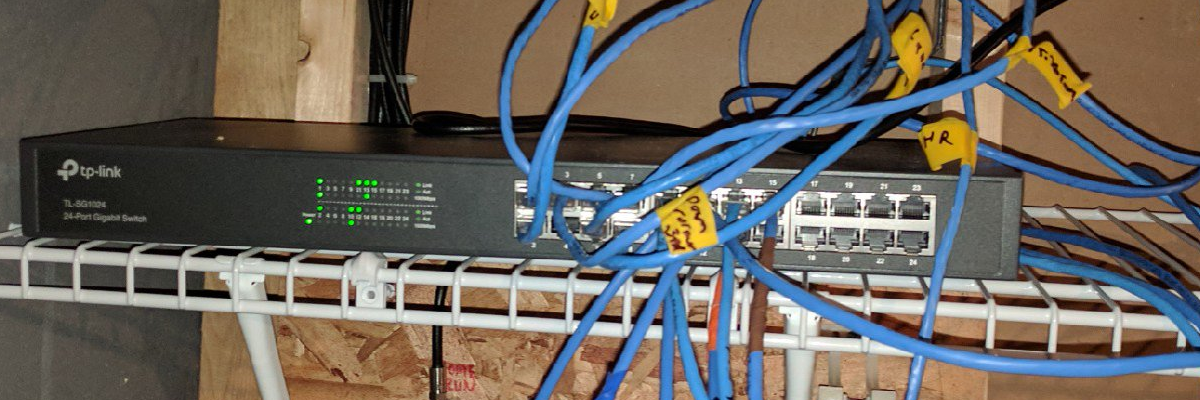wagesj45
Great American humorist. C# developer. Open source enthusiast.
XMPP: wagesj45@chat.thebreadsticks.com
Mastodon: wagesj45@mastodon.jordanwages.com
Blog: jordanwages.com
- 1 Post
- 21 Comments
And hundreds of thousands of years of evolution pre-training the base model that their experience was layered on top of.

 21·2 years ago
21·2 years agoAny reasons why you can’t recommend it?

 2·2 years ago
2·2 years agoInteresting, because I saw a 20 point increase between vanilla Firefox and Mercury when testing last night.

 4·2 years ago
4·2 years agoThat’s not a bad idea. Surely it could be automated within the image. If my ADHD allows me I might take a look at it later. :D

 7·2 years ago
7·2 years agoLooking at the installation instructions, it requires you to run database migrations manually with every image docker image update. Does this mean that running watchtower is going to bork this thing?
Proxmox on physical servers hosting a variety of vanilla Debian installations. I have a physical router running pfsense as well as two HP miniservers running OpenMediaVault.

 5·2 years ago
5·2 years agoThe problems I’ve had with my RPis have all revolved around the fragility of their SD storage. I got burned one too many times trying to host something important in my house with these things, just for them to get corrupted and lose everything. Backing up these systems was its own nightmare, which failed as much as it succeeded.
What’s wrong with that?

 63·2 years ago
63·2 years agoI don’t think you’ve properly thought through the consequences of not considering IP rights for projects with a significant number of contributors. There are absolutely situations in which having a single IP holder is advantageous to having multiple IP holders. Large open source projects might find governance hard when they’re hamstrung by getting consensus from hundreds or thousands of contributors.
And yes, I did read the title and the post. I understood it.

 37·2 years ago
37·2 years agoCopyright and license agreements are not at all the same thing. And just because something is “open source” doesn’t mean that it is free of copyright.

 3·2 years ago
3·2 years agoIf my understanding of the GPL is correct, you can definitely build it yourself and publish it on fdroid. Can’t use the same name or any trademarks noti has, though.

 4·2 years ago
4·2 years agoIt wouldn’t be FOSS because a landing page with nothing but content isn’t software. I’m referring to the site at blender.org vs the source code for an application at a git repository.

 13·2 years ago
13·2 years agoI would suggest actually naming the license under which it is released if you’re talking about the website that is generated by your software. If you’re talking about the content of a website describing your project, like a landing page or something like that, I’d either attribute copyright to who wrote the content, or release it under a Creative Commons license such as CC-BY-NC.
This has amused me. Thank you for the amusement.

 10·2 years ago
10·2 years agoThe software landscape for XMPP isn’t the best. I twisted the arms of my immediate family and have them using XMPP messaging with a Snikket server I set up, and we’ve had lots of issues between OMEMO support and the lack of good messaging clients for iOS. It works, but it isn’t the smooth-out-of-the-box experience that non-techies want/need.
Not providing builds seems to be a good incentive. I’ve seen some projects that charge for the installation/compiled software with the source freely available. Lots of software is a gigantic pain in the ass to build without the proper configuration and pipeline set up.

 21·2 years ago
21·2 years agolighten up man

 29·2 years ago
29·2 years agoI use Publii. It is a static site generator, and it’s open source. In my opinion, statically generated sites are superior for a lot of purposes. You can upload the generated site to any web hosting service. It doesn’t include any trackers. It actually only produces the content you ask it to.
It is also very easy to use. The interface is a lot like what you’d expect if you’re familiar with Wordpress or similar. If you have an existing Wordpress blog, you can import it and keep all your content.
My blog is generated by Publii. There is no code running on the server, it is all plain HTML. I run a self hosted tracking service myself, but I had to intentionally add it to the footer of the generated pages.

 1·2 years ago
1·2 years agoThe main barrier here is the basic computer knowledge. Jewelry design is almost certainly going to have to be solved by a CAD solution. And CAD is a complicated type of design work to do on computers.


This is important. I dunno about scale, but backups. I started out hosting a chat room on a raspberry pi. It was a fun side project. But then, that became where my friends all hung out. That was the place, so it became important to me. And then the SD card got corrupted. I then moved on to a consumer laptop. It was way more stable, much faster. But if I messed up anything about the installation, I was hosed.
I very highly suggest using Proxmox, like you say, and setting up automatic backups. And occasionally transfer them to a hard drive. It doesn’t matter what kind of virtual CPUs or services you install, gedaliyah@lemmy.world, as long as you have a plan for when something you host becomes important to you and you lose it.